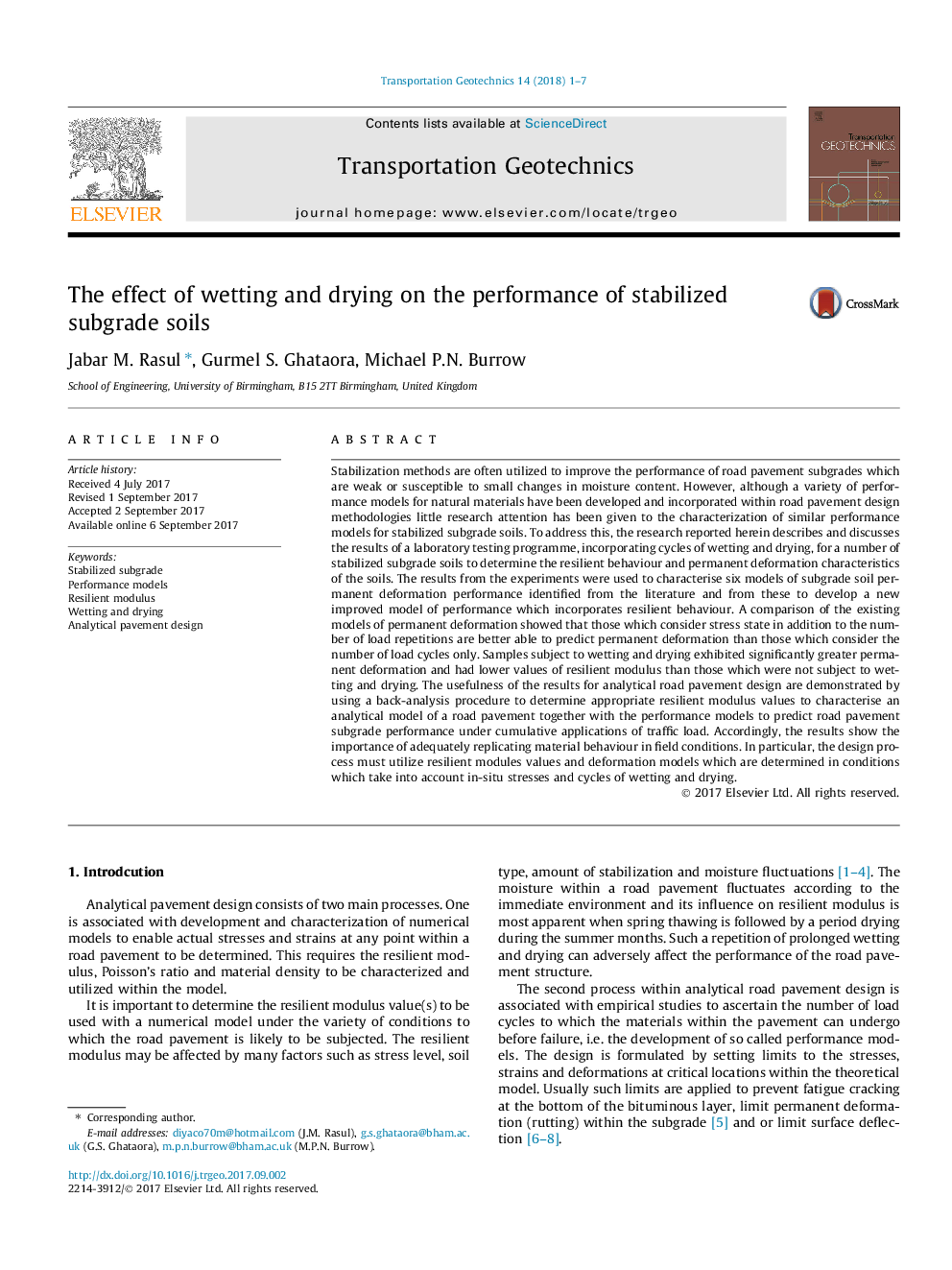| Article ID | Journal | Published Year | Pages | File Type |
|---|---|---|---|---|
| 4928756 | Transportation Geotechnics | 2018 | 7 Pages |
Stabilization methods are often utilized to improve the performance of road pavement subgrades which are weak or susceptible to small changes in moisture content. However, although a variety of performance models for natural materials have been developed and incorporated within road pavement design methodologies little research attention has been given to the characterization of similar performance models for stabilized subgrade soils. To address this, the research reported herein describes and discusses the results of a laboratory testing programme, incorporating cycles of wetting and drying, for a number of stabilized subgrade soils to determine the resilient behaviour and permanent deformation characteristics of the soils. The results from the experiments were used to characterise six models of subgrade soil permanent deformation performance identified from the literature and from these to develop a new improved model of performance which incorporates resilient behaviour. A comparison of the existing models of permanent deformation showed that those which consider stress state in addition to the number of load repetitions are better able to predict permanent deformation than those which consider the number of load cycles only. Samples subject to wetting and drying exhibited significantly greater permanent deformation and had lower values of resilient modulus than those which were not subject to wetting and drying. The usefulness of the results for analytical road pavement design are demonstrated by using a back-analysis procedure to determine appropriate resilient modulus values to characterise an analytical model of a road pavement together with the performance models to predict road pavement subgrade performance under cumulative applications of traffic load. Accordingly, the results show the importance of adequately replicating material behaviour in field conditions. In particular, the design process must utilize resilient modules values and deformation models which are determined in conditions which take into account in-situ stresses and cycles of wetting and drying.
